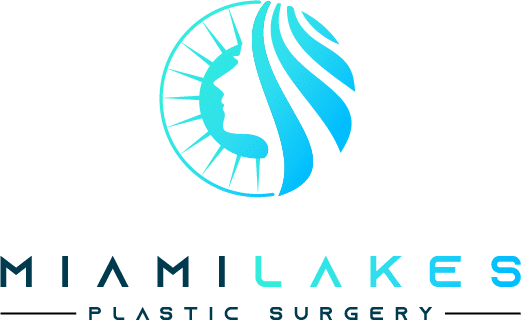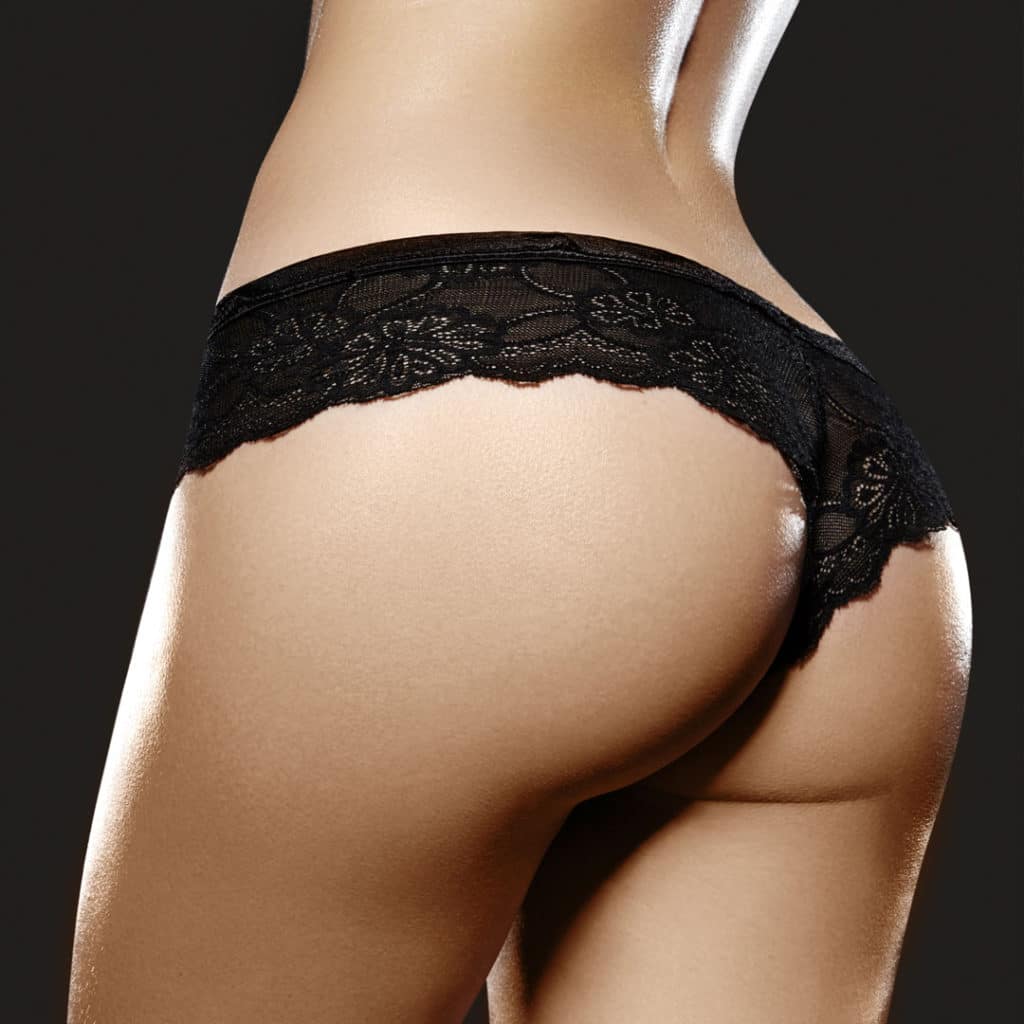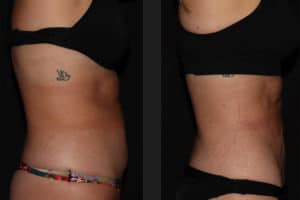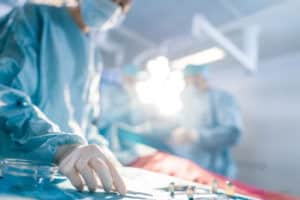How Does Fat Transfer Work?
Fat grafting or fat transfer is the process by which surgeons harvest fat from one part of the body and use it in another part of the body. This is essentially a form of cellular transplantation, meaning doctors take tissue from one part of the body, in this case, it is fatty tissue, adipose cells, and repurposing it to serve a function elsewhere in the body.
The difference between fat transfer and organ transplantation, like a kidney transplant, or a liver transplant, is that with those operations surgeons are taking a kidney and its blood vessels and hooking that blood vessel up to the blood vessel at the recipient site so that the blood can pump from the recipient’s site into the end organ, in that case, the kidney; whereas in a fat graft or a fat transfer you’re not hooking up any blood vessels, you’re dealing with individual cells.
Initially, doctors are relying on the environment of those cells to be able to provide the same services as blood vessels. Those cells need to get oxygen from their environment and they should be able to get rid of waste products without the direct connection of the blood supply. They do that by releasing waste products into their environment and taking in the nutrients and oxygen that they need from their environment for the first several days after they’re transplanted. Ultimately new blood vessels grow into the cells and they start to function like mini-organ transplants once they have an independent blood supply.
Fat transfer or fat grafting has had all kinds of uses. It is very popular in breast reconstruction. If patients need a little more volume in the reconstructed breasts doctors harvest fat from one part of the body and add it to the breasts to make them a little more voluminous or to improve their shape.
They can use similar strategies in breast augmentation, either to enhance the appearance of a breast implant-based breast augmentation or to do with a breast augmentation with fat grafting or fat transfer on its own.
Both of those things are fairly popular now. One of the favorite uses for the fat graft is in facial rejuvenation. And specialists can use fat to rejuvenate the face in several different ways.
One of the main things that lead to the classic appearances of facial aging is the loss of facial volume so instead of using fillers to increase facial volume and improve facial structure, surgeons use fat graft and transfer fat from elsewhere in the body to the face to create a more youthful appearance.
They can also use fat grafting for facial rejuvenation in combination with a facelift. A facelift is excellent for dealing with skin laxity and surgeons can reposition the deeper tissues of the face.
There is a limit to how much volume change and volume repositioning they can do with a facelift because if the patient has already lost a lot of fat from the face you can create that fat from nowhere, whereas with fat grafting there is a whole new kind of flexibility.
They can reposition the facial foundation with the facelift, they can retrieve the skin to be exactly what you’d like it to be to have a nice youthful contour.
Now you have this great source of value in the form of fat from elsewhere in the body, and they can get fat grafting at the same time is a facelift to both build that foundation and also increase facial volume to build a nice youthful appearance.
Process of fat grafting work?
Surgeons perform liposuction from the donor site which is the area that they are going to grab those fat grafts from. That is often the abdomen or the waist to the inner thigh or anywhere with a little extra fat that you’d like them to steal.
They can often do that very gently. They don’t need the power-assisted liposuction for this. They can do it with a tiny incision often smaller than the size of a pencil eraser, so the fat is gently harvested causing almost no discomfort. Then the process that fat and it means to make the fat into a paste that will have a very small particle size so that it easily glides into the donor area and it can have accessibility to all those nutrients that were mentioned earlier without being caught in big clumps of fat.
It is done this by passing the fat in the syringes through a device that essentially exposes the fat to smaller and smaller diameter channels, these are almost like funnels that have a progressively smaller diameter. To get through, the fat particles have to get smaller and smaller over time. By doing multiple passes like this they form that fat graft into a nice uniform smooth paste for fat transfer into the donor site.
After they have gotten out the extra oils and other fluid that they don’t want as part of a fat graft, and they do this by gently rolling the fat graft over special absorbent pads. They take the fat loaded into very small syringes and fit those syringes with very small diameter cannulas which are blunt-tipped, they have the lumen or the hole off to the side, and this provides a very safe comfortable injection experience.
Then they simply deposit these processed fat grafts into the recipient’s site. Depending on the area that they are targeting with these fat grafts, they are using extremely fine cannulas, and the access points to insert these cannulas are often made with a needle, so there’s often no visible scar at the recipient’s site for a fat graft. Once that fat graft is in place it is essentially a waiting game. Doctors need to provide an optimal environment for those fat grafts, those individual fat cells, or adipocytes to be able to take on nutrients from their environment until new blood vessels grow to supply them directly.
The key to doing this well is using a very small fat particle size and placing only very small quantities of fat with each pass of the cannula to ensure that it is exposed to the largest surface area possible of surrounding tissue so that it can take as much oxygen and nutrients as it needs and also get rid of as much waste as it has to do until it has its dedicated blood supply.
Because these fat transfers or these fat grafts are essentially cell transplants or tissue transplants, it’s not guaranteed that all of the fat that is transferred is going to survive.
In most cases, in most locations, about 50 to 60 percent of the fat that is transferred on average is going to survive permanently. In a lot of instances, it will end up deliberately over grafting or overfilling the recipient area. The results are visible once that fat partially resorbs.
Fat grafting is a very dynamic process. About 6 months after the procedure for fat transplantation or fat grafting that’s when patients can get a sense of what the final result will be like.
No matter how much fat you’re putting in, you are going to lose a percentage of it, about 40 to 50 percent isn’t going to make it and by the time patients get to about 6 months, they have a good sense of what the final result is going to look like.
Specialists often go into fat grafting procedures with the expectation that they are going to have to do a second round of fat transfer after about 6 months, so that they have the flexibility to evaluate the result and then add a little extra fat here or there to tweak things and get it perfect.
One of the most popular kinds of fat transfer that’s done right now is fat transfer to the buttocks or the Brazilian buttock lift or BBL. This is where they are taking fat from elsewhere in the body, often large volumes of fat from the abdomen or the waist to the flanks, and then transferring it to the buttocks.
This is different because this is a very large volume of fat transfer, and the goal here is to improve the shape or the size of the buttocks or their projection or their perkiness. While the same principles do hold here for Brazilian buttock lift or BBL as to the other kind of fat transfer was discussed earlier, it deserves to be singled out and highlighted because this is a procedure that is a lot more dangerous than a lot of other aesthetic surgery procedures, including other kinds of fat grafting procedures.
Part of the issue is that there are very large blood vessels in the buttocks, and when large volumes of fats are injected into the buttocks this can cause a fairly steep pressure gradient or put a lot of pressure on the buttocks and that can force fat into those large blood vessels in the buttocks which can then travel to the heart and be very dangerous, even lethal in the form of what is called a fat embolism. The fat embolism is when fat gets into the circulatory system and cuts off blood supply to other parts of the body.
The Brazilian buttock lift or BBL or fat transfer to the buttocks is a unique procedure in that its risk profile is much higher than the risk for fat grafting to other parts of the body or other cosmetic surgery procedures in general.
When you are considering having this procedure it’s especially important to go to a board-certified plastic surgeon who has real expertise in fat grafting in a proven safety track record, specifically with this procedure.
The other question with regards to fat transfer is how much this fat transfer costs and how much does fat grafting cost. This is something that varies a great deal. The factors that come into play here is the experience level of your surgeon, the geography of where you’re having your procedure performed, the volume of the fat that you’re having transferred, the location of the fat that you’re having transferred, and the overall complexity of the procedure.
Imagine somebody wants to use fat grafting to augment their cheeks and the procedure is done under local anesthesia. You can reasonably expect to pay anywhere from 5 to $6000.
Another area is fat grafting to the breast. This is a topic that requires a special mention because the breasts are a paired structure meaning you have a right breast and the left breast.
Surgeons don’t know for sure how much fat is going to survive with a given fat grafting procedure. If they are using fat to augment the breasts they can’t be sure that even if they put the same amount of fat on both sides they are going to have the same amount of fat permanently survived in each breast. To make sure to get good symmetry you need to go into one of these fat grafting procedures to the breast with an open mind to having a secondary fat grafting procedure.
The other thing to know about fat grafting to the breast is that while it’s very appealing a lot of ways to look at fat grafting as a primary way to do breast augmentation, maybe you don’t need a breast implant if you using fat.
It takes a significant amount of fat to increase your breast size as much as you might like to. As the framework for reference, to increase the breasts buy a cup size you have to increase the volume of the breast by 100 to 150 milliliters, and that is a significant amount of fat.
For example, in a standard liposuction case of the abdomen it is usually removed between 600 milliliters and a liter of fat from the abdomen, and after processing about half of that fat is useful for transplantation. If they are taking at most a liter of fat out of the abdomen during a liposuction procedure, they are going to have about 500 milliliters of usable fat for fat grafting.
Assuming they are going to be grafting the breasts pretty much symmetrically, that gives us 250 milliliters per side of fat, and then if we remember that we mentioned that about half of that fat on average is going to last in a permanent way that means that just 125 CC’s of fat is going to last in a meaningful way.
On a standard liposuction case, where doctors are taking a significant volume of fat from the abdomen that’s about a liter, they are going to end up with about 125 ccs of fat that’s going to stick around on each side.
The fat transfer method when used in isolation for breast augmentation might be okay for those who want a modest improvement but if you’re looking to go up significantly in your breast size, for the most part, you should be looking at an implant-based breast augmentation which can certainly be augmented by a fat grafting if you want to manipulate specific aspects of the breast shape.
Sometimes people will have an implant-based breast augmentation and then have fat grafting to the upper pole of their breasts to highlight that fullness but fat transfer on its own may not be the best approach to breast augmentation if you are looking for a large increase in breast volume.
Moving to a specific procedure, we are going to deal with Butt Augmentation with Fat transfer.
One of the fastest-growing cosmetic surgery that is undertaken by board-certified plastic surgeons (American Society Of Plastic Surgeon) is the Buttock Augmentation surgery.
If we go by the statistics of 2016, Buttock Augmentation with fat transfer surgeries (also known as the Brazilian butt lift) has increased by 895% between 2000 and 2020. As per the American Society of Plastic Surgeon, Brazilian butt lift was the fastest growing cosmetic surgery.
With the ever-growing social media engagement amongst millennials and the desire to look beautiful, such surgeries have gained an unprecedented advantage in the market. Let us understand the nuances of these procedures so that it gives you a fair idea of how to go about crafting your body, should you choose to do so.
Fat Transfer to Buttocks: What You Should Know Before You Decide
1. The Fat Harvested is Your Own: The procedure of butt augmentation uses the process of liposuction to remove unnecessary fat from places of your body which has thick fatty tissue and contains a healthy fat deposit (mostly found on the thigh region or stomach region). The fat is cleaned in a sterile setup and transferred back to the buttock region using a syringe. The tightening or lifting that is a post-procedure look is the effect created by your body tissues.
2. You May Require More than One Procedure: As for any grafting surgeries, it is quite natural that some of the fat (that is transferred), will be reabsorbed by the body. It is because the way the fat is transferred to the buttock region, not all tissues survive, approximately 60% to 80% of the transferred fat stays in the body, the rest is absorbed naturally as per the human body fat burning process.
3. The Results are Lasting: To get better results that are permanent, one should think of butt augmentation along with implants. This type of surgery is called Gluteoplasty, during such surgeries, a small cut is made and a silicone implant is inserted just above the hip bone area. This helps enhance the shape and mass of the buttocks (similar to fat grafting). This solution is effective for people who do not have much body fat (and hence fat extraction becomes a challenge).
How much fat can be transferred to the buttocks?
Well, the next obvious question comes, how much fat can be transferred, to be concise most of the surgeons can tell you during the consultation after looking at your body mass index about how much fat can be transferred to the buttocks, however, it is normally observed that patients need 900cc to 1000cc of fat transfer for a butt augmentation (400cc to 500cc per buttocks).
Does fat transfer to hips last?
Although naturally, some of the fat injected in the buttocks would be reabsorbed by the body, a good surgeon will always know where and how to pick the right quality of fat for transfer, this procedure ensures lesser chances of multiple procedures.
Surgeons normally overfill the target region during the fat transfer process, this helps the fat cell remaining to adapt and endure the body to last a lifetime.
Fat transfer from the stomach to buttocks cost.
The cost of transfer fat from the stomach to buttocks depends on the amount of fat that would be removed from and used in the buttocks. In normal procedures, the cost can be in the range of $2900 to $5100. But the price might go as high as $11,000 t0 $13,500 depending on additional surgical requirements to provide that everlasting body-contouring look that you can flaunt.
Do note that these kinds of surgeries are considered cosmetic surgeries and normally are not covered under the insurance. You will need to cover the entire cost of anesthesia, hospital charges, and other out of pocket expenses. You will also have to factor in the cost of loss of work during your hospital stay and recovery period.
All about the Surgical Procedure
This type of surgery is normally done in the outpatient department. Ensure you have a friend or relative to drive you home post the surgery.
Normally these surgeries are performed in an accredited hospital, the entire procedure takes about 3 to 4 hours to complete, and however, it may extend depending on the requirements. The steps involved in the process are
- Administering medication to make you comfortable during the procedure, includes general anesthesia. Some cases may require local anesthesia or intravenous injections
- Various monitors are used to keeping a check on the heart rate, blood pressure, oxygen level, and pulse, during the procedure
- A surgical plan will be followed (this will be discussed with you as part of the pre-operating consultation)
- Once the procedure is complete, you will be transferred to a recovery area, here you will still be monitored for your vitals
- The operated areas will have garments to compress the area (the liposuction area and the buttocks area). A surgical dressing will be used to cover the operated area
- You will be allowed to go home after a couple of hours of the surgery unless the surgeon has other plans for your immediate recovery
Once the anesthesia wears off, you may experience some pain and discomfort. Swelling is another common factor associated with these kinds of surgeries, the swelling may remain for weeks (in some cases for months). There is a normal symptom of fluid built-up in the operated area, draining pipes are used to drain the fluid out of your body.
Some surgeons recommend special massage sessions to reduce the pain and swelling (this completely is your choice and your comfort with the budget). The massage also helps in draining the excess fluid from the operated areas.
Recovery Time
It is very important to follow the instructions given by the surgeon after you have been operated on. This includes
- How long to wear the compression garments
- When and how many times the fluid needs to be drained from the operated areas
- Taking all the prescribed medicines including antibiotics
- 10.Kind of physical activities to engage and not to engage in during the recovery period
Final Results
Under normal conditions the results are long-lasting, it is presumed that the transferred fat will remain there for the rest of your life. As normal tissues age, the fat will also age, if implants have been used they need not be removed unless you develop some complications (which is rare).
Just remember this surgery improves the shape of your buttocks, however, to keep it the way it was contoured, you will need to make some lifestyle changes to maintain the new shape (this also includes fitness regime).
So if you are getting into a butt augmentation program, just make sure you find a trained and certified surgeon (preferably from the American Society of Plastic Surgeon). Consult your doctor and make an informed decision of the pros and cons of the surgery.
After all, it is your body and you are responsible to take care of it. So it is all about acquiring the correct knowledge and giving your body that lovely shape you always wanted.
Other considerations on Brazilian Butt Lift.
The secret lies in selecting the right surgeons and professionals who can do a good job of it. To begin with, these doctors should be a part of a qualified group of surgeons. We also are listing down the various other things to keep in mind while hiring the right surgeons who can do a professional, safe, and result-oriented BBL surgery. We also will be looking at a few things that could help the patients to prepare right for the BBL.
Find A Board-Certified Plastic Surgeon
The first thing is to ensure that you need such surgery. BBL is an expensive surgery and in some cases exercises, workouts, and other such activities could help to solve the problem. However, in case it becomes unavoidable, the next step is to spend time and effort to choose the right surgeon and clinic for this job. It would always be better to look for a professional who is certified by the American Society of Plastic Surgeons. If you are planning to go through such a surgery, there are a few important things that you must bear in mind. The whole plastic surgery is a long-drawn process and it is ridden with risk and dangerous side-effects if not done by professionals who are also licensed.
Surgeons who are part of the American Society of Plastic Surgeons (ASPS) are preferred because they have the requisite experience and expertise. Becoming a qualified plastic surgeon and being affiliated with this board is not easy. It takes six years of hard work and studies. Additionally, these surgeons have to perform scores of cosmetic procedures and surgeries. They gather experience that helps in performing successfully butt lift surgeries. On the other hand, they also are capable of handling unexpected situations that could crop up in an operating room. ASPS is equipped to find out the right surgeons who are capable of carrying out the right BBL surgeries.
It would be better to stay from the various cosmetic surgery forums and other such organizations when it comes to identifying the right plastic surgeon. This is because many of them may not have the right representation of reputed and licensed professional surgical organizations. Most of these forums go by paid listings and use them to identify plastic surgeons. Many times, these forums are also known to recommend surgeons who are not properly trained. Choosing such surgeons from unknown or lesser-known forums may be fraught with danger and problem.
How to Find A Recovery House Or Accommodations
Though many patients may not find it obligatory to stay in a recovery house, it is recommended because of some obvious advantages. Yes, it is necessary to be in such recovery houses at least for a few days post-surgery. This is because regular and round-the-clock is required to ensure that the healing process takes place fast and without any risk of side effects and dangers. Here are a few tips to keep in mind when you are choosing such accommodations.
The first few days after the surgery, it is quite obvious that the patients will find the operated area to be sore and uncomfortable. Some post-operative instructions should be followed. It would be difficult for patients to follow the same in their homes. Hence, it would be better to look for recovery houses that offer such facilities. Once the healing process is quite satisfactory the surgeons may recommend discharge of the patients to their homes. However, there are many in and out of state patients who may need to get themselves admitted to these recovery houses even after they have been discharged and asked to go back home.
Ensure that you stay in a recovery center where you get round-the-clock attention especially during the first few days after the surgery. You can expect to have inflammation, pain, and soreness and these need immediate attention. It also could help to reduce the risk of blood clots because such clots could be dangerous and perhaps even life-threatening. Normally, you may have to stay for a week or so if you are in such recovery centers. However, if you are visiting these places from a different state or province, it would be advisable to spend a few more days so that you can avoid the need for revisiting them now and then.
Out of state patients should stay for a minimum of 2 to 3 weeks post-surgery for check-ups and prevent any damage to the transplanted fat due to sitting long hours in a flight. For this reason, you should find a recovery house where you have nurses by your side to help you during the recovery process. Some doctors even have their own recovery houses for out-of-state patients, if that is not the case with yours, consult him about recovery houses that are near the facility or talk to previous out-of-state patients of him and ask where they stayed.
Understand the Relevance of BBL Survival Kit
There are a few important BBL survival kits that you must always keep in mind. They are as follows:
- BBL pillow is essential because it helps to support the thighs and relieves the pressure on your butt.
- Shower curtain for extra protection to the bed mattress
- Antiseptic and moisturizing cream for reducing post-procedure pain and discomfort.
- Gauze pads.
- Large bed pads and exam gloves.
- Wet wipes
- Toothbrush travel kit and suppositories for easing bowel movement.
Make sure that you are wearing the right garment after the BBL. It should be light and should not stick to the sore wounds. The wounds are covered post-surgery but the right garments help the process of healing. They should not be tight and should allow free movement of air.
Healthy Habits
Avoid unhealthy habits such as smoking or drinking alcohol at least two weeks before the surgery. Exercise and eat healthy as well as drink plenty of water. Avoid taking medications that are blood thinners such as ibuprofen, aspirin, certain diet pills, etc.
Get a Free Consultation with the Plastic Surgeon
There are many online facilities available today that could help you to have a preliminary consultation. Many qualified and experienced plastic surgeons are experts in BBL too. They would be willing to offer free consultation even over the phone. It will help you to get a brief oversight about the need or otherwise for BBL. The surgeons will also seek more information about your general health, age, and will brief you about the possible risks versus benefits. Yes, they also will talk about the costs involved.
FAQs That You Must Ask the Surgeons
- Is He or She ASPS certified?
- How many BBL surgeries has the surgeon performed?
- Will they share before and after videos or pictures of BBL surgeries performed by them?
- What is the cost?
- How long will the recovery period be?
- What are the possible side effects and risks involved?
Conclusion
While BBL is a wonderful option for giving a new shape to the butts who need it, it should be done by qualified and certified surgeons. It is expensive and the recovery period should also be taken into account. It could also impact your daily routine and job for a few days and weeks and these should also be factored in.





